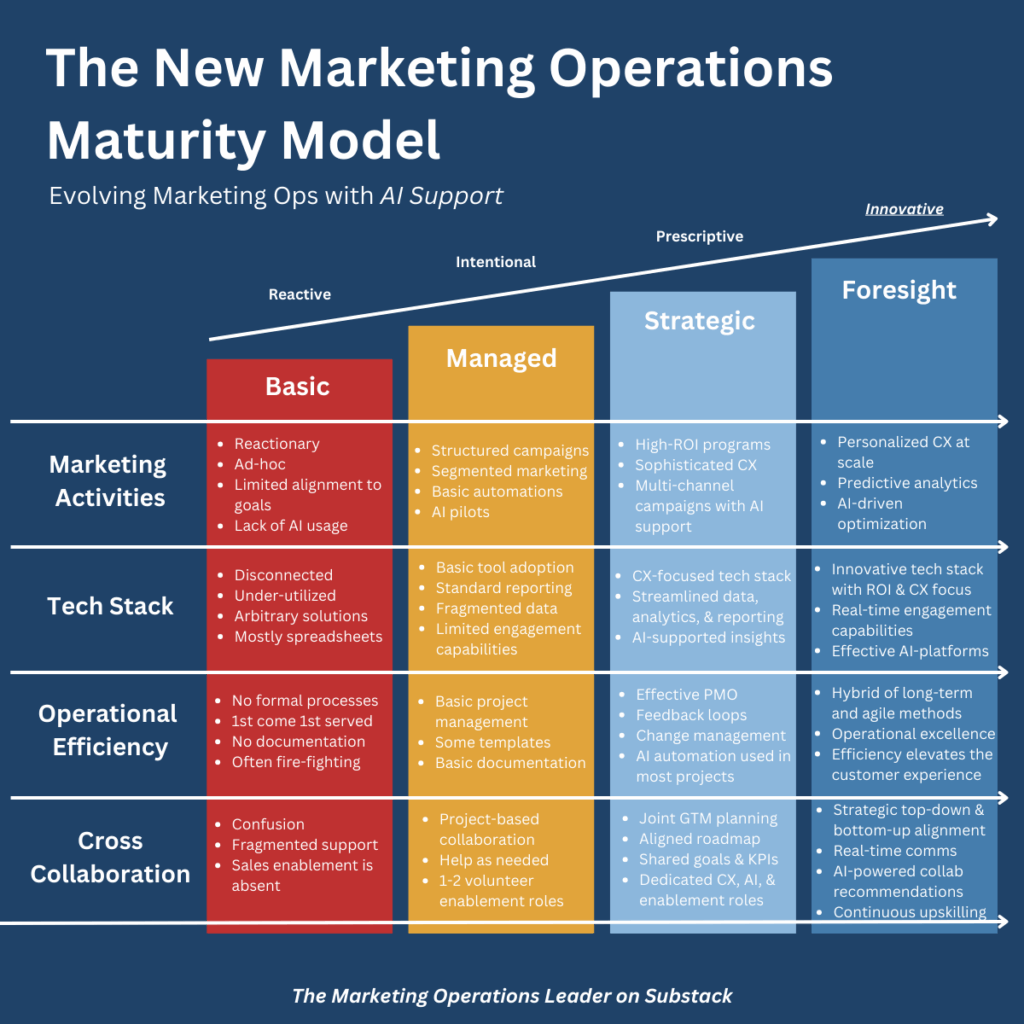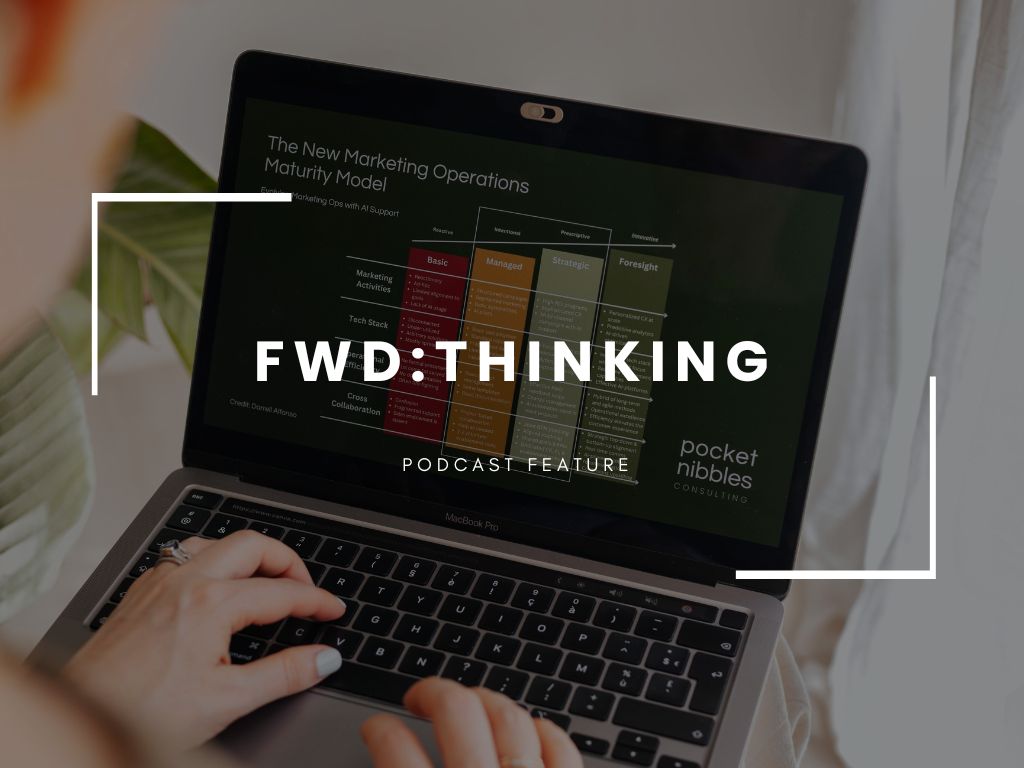In 2022, I joined CS2’s Chrissy Saunders on the Forward Thinking podcast, for a deep dive into how small marketing operations teams can scale effectively. I shared not just tactical advice, but my own unconventional journey from psychology student and receptionist to MOPs leader and now to independent consultant. Here are the key insights from our discussion.
Falling Into MOPs: My Origin Story
Like many MOPs professionals, I did not plan on a career in marketing operations. After studying psychology and French, my first job out of school was at a French tech company in Chicago, where I started as a receptionist. My title was “Strategic Marketing Intern.” I did everything from answering phones to picking up the CEO’s unique coffee order to managing event RSVPs by manually BCC-ing email lists into an Outlook email.
My interest sparked when the company adopted Eloqua and wanted to integrate it with their homegrown CRM. I quickly took to building workflows and exploring automation, which led me to my first major migration (from Eloqua to Marketo), and I’ve been hooked on marketing tech and operations ever since.
The Challenges of Small MOPs Teams
Having worked in MOPs teams ranging from one to ten people, I talked about several recurring challenges for small teams:
- Lack of Awareness: Small teams often exist in early-stage companies where marketing operations is undervalued or misunderstood.
- Executive Buy-In: It’s difficult to get leadership to understand the strategic value of MOPs beyond “sending emails.”
- Bandwidth Issues: Small teams are often tasked with managing the full spectrum of MOPs: campaign operations, platform management, reporting, analytics, and more.
- Staying Focused: With limited resources, it’s critical to identify high-impact projects that align with business priorities.
Education and Enablement: The Unsung Hero Work
One of the hardest yet most critical roles of MOPs is education and enablement. New hires across departments often don’t understand what MOPs is or how it intersects with product, customer success, and sales. Increasing headcount won’t always solve this alone. There needs to be a dedicated effort to advocate for MOPs internally.
My strategy: partner with non-marketing cheerleaders to amplify MOPs’ value across the organization. You may find these cheerleaders hiding in sales ops, customer success, or even product.
Prioritization and the Marketing Maturity Model
To help focus, I recommend using a Marketing Operations Maturity Model. Understand where your organization sits (Level 1 to 4) and plan accordingly. Avoid jumping into advanced initiatives like attribution reporting if your foundational processes aren’t yet solid.
Use the classic effort-impact matrix:
- Mix quick wins with long-term strategic projects.
- Show early success to earn credibility and buy-in.
A great example of a Marketing Operations Maturity model can be found on Darrell Alfonso’s Substack.
What I love about this one: it breaks down the vast role of MOPs into sections and clearly explains how you can mature across the board.

Tools, Tech, and When to Add Headcount
One signal that it’s time to scale your MOPs team is when tech stack complexity outpaces internal resources.
- Audit your tools: Are they redundant or essential? See my post about how to audit your MarTech stack here.
- Don’t let tool maintenance consume all of MOPs’ time.
- Agencies or consultants can temporarily fill the gap.
A growing go-to-market strategy (e.g. adding PLG) should also trigger headcount discussions.
Core Tips for Surviving (and Thriving) with a Small MOPs Team
Here are my five essential survival tips:
- Use the Maturity Model: Anchor your roadmap in reality.
- Prioritize Ruthlessly: Focus on what brings measurable business value.
- Find a Cheerleader: Cultivate advocates outside of marketing.
- Document Everything: Processes, decisions, FAQs, build a knowledge base.
- Focus on People, Process, and Tech: Balance your strategy across all three pillars. And never forget to communicate.
Bonus advice: don’t underestimate the value of flexibility and curiosity in team hires. Certifications help, but attitude and adaptability are gold.
Closing Thoughts
“You can’t give executives the cherry on top of the cake until you’ve baked the cake.” Whether you’re a MOPs team of one or ten, laying the right foundation, and getting the org to understand its value, is key to long-term, scalable success.





